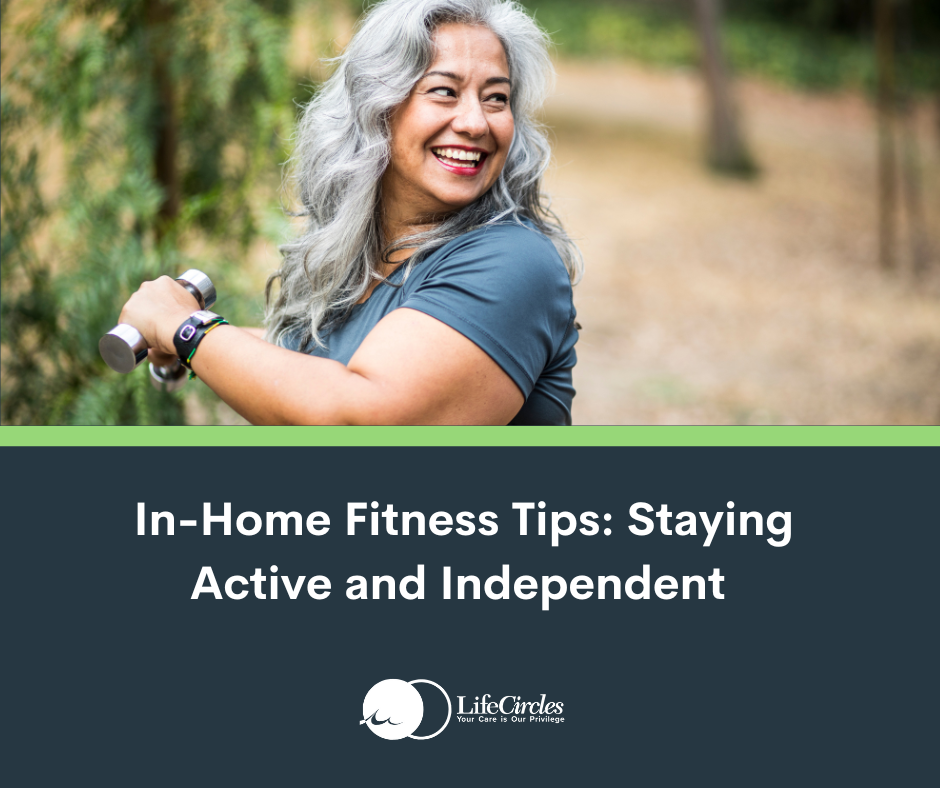In-Home Fitness Tips for Seniors: Staying Active and Independent
Staying physically active is a cornerstone of healthy aging, playing a crucial role in maintaining independence, vitality, and overall well-being as we grow older. For many seniors, the comfort and convenience of exercising at home make it an attractive option, especially when mobility issues or transportation challenges arise. Regular physical activity is shown to help manage chronic conditions, improve balance and flexibility, boost mood and cognitive function, and reduce the risk of falls – a common concern for older adults.
Moreover, engaging in fitness activities at home eliminates barriers such as weather conditions, gym membership costs, or the need to travel. Whether you’re new to exercise or looking to adapt your routine to home-based workouts, this guide offers practical tips to help you stay fit, active, and independent, all within the familiar surroundings of your own living space. It’s never too late to start reaping the benefits of a more active lifestyle, and even small increases in physical activity can lead to significant improvements in your health and quality of life.
1. Start with a Warm-Up
Begin each exercise session with a 5-10 minute warm-up to prepare your body. A simple warm-up will increase muscle and tendon suppleness, stimulate blood flow, and enhance coordination during the workout. Incorporate a mix of stretching and static workouts to optimize the success of in-home work. Try gentle marching in place to get your blood flowing. Follow along with in-home virtual videos, to loosen the body and stretch muscles to prevent injury during the workout. A simple warm up will improve flexibility in your joints and muscle movement.
2. Focus on Balance Exercises
Improving balance can help prevent falls, a common concern for many seniors. On average, 30% of adults over the age of 65 will fall within a one-year time frame. Balancing exercises are one simple way to promote core strength and prevent falls within the home. Practice standing on one foot and holding onto a chair for support if needed. As you gain confidence, try to stand without support for longer periods. Another great balance exercise is the heel-to-toe walk. Take 10 to 20 steps forward, placing the heel of one foot directly in front of the toes of your other foot. For a gentler option, consider incorporating some basic Tai Chi movements into your routine.
3. Incorporate Strength Training
Use light weights or resistance bands to maintain muscle mass. Bicep curls are an excellent exercise for your arms. Hold a light weight in each hand and curl your arms up towards your shoulders, then slowly lower them back down. Shoulder presses can help maintain upper body strength. Hold weights at shoulder height, then press them up over your head before lowering them back down. For your lower body, try leg lifts while seated or standing. Remember to start with light weights and increase gradually as you build strength.
6. Use Household Items
No fancy equipment? No problem! Use what you have around your home. Soup cans make great light weights for arm exercises. A sturdy chair can provide support during balance exercises or can be used for seated workouts.
7. Stay Hydrated
Keep water nearby and drink regularly during your workout. Staying hydrated is crucial, especially as we age. A recent study done by the Los Angeles School of Nursing found that up to 40% of their patients over the age of 65 were chronically dehydrated. Sip water before, during, and after your exercise routine to keep your body functioning at its best. Water consumption can also come from water-rich foods such as cucumbers, watermelon, lettuce, strawberries, and celery. Soups, broths, and stews are another great way to boost your fluid intake as well as consuming vital nutrients and minerals. Staying hydrated can look different for each individual, but it’s important to consider practical habits that can improve hydration levels.
Make It Social
Exercise with a partner or join virtual fitness classes to stay motivated. Working out with others, even virtually, can make exercise more enjoyable and help you stick to your routine. Set up an iPad for FaceTime with a friend or turn on an in-home workout video and let the fun begin! Consider setting up regular times with friends or family members to exercise together, and hold workout partners accountable when it comes to attendance.
Consistency is Key
Aim for at least 30 minutes of activity most days of the week. Remember, it’s okay to break this up into smaller sessions throughout the day. Even short bursts of activity can add up and provide significant health benefits. The most important thing is to make physical activity a regular part of your daily routine. Not only is a 30-minute workout good for physical well-being, it is also beneficial for mental well-being. Working out increases serotonin levels in the body and is a great way to improve mood and alertness throughout the day.
Before starting any new exercise program, especially if you have any health concerns or chronic conditions, consult with your healthcare provider. They can help you create a safe and effective fitness plan tailored to your needs. By incorporating these tips into your daily routine, you can maintain and even improve your fitness, all from the comfort of your own home. Stay active, stay independent, and enjoy the many benefits of a healthy lifestyle!
Last Updated on October 22, 2024
